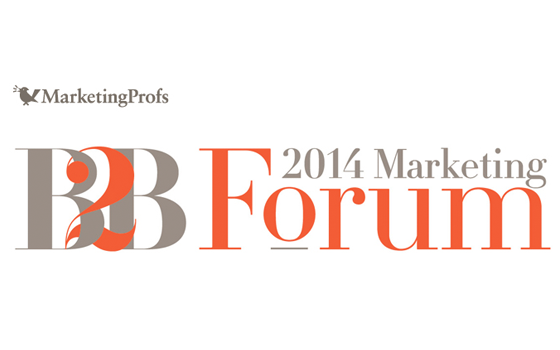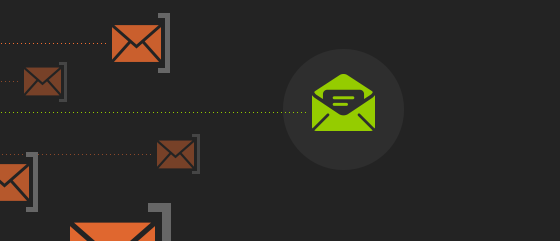Whether attending, presenting, or having a booth, events are part of most every company’s marketing plan. Events are a great place to generate leads and nurture relationships with prospects offline. However, most companies fall short by not leveraging ways to effectively integrate their online marketing efforts, specifically email, with their offline initiatives.
Before we delve into event email marketing, you’ll want to flesh out your event marketing campaign. When thinking about marketing campaigns, you should start by first answering the five Ws and goals of the campaign to help flesh out an outline. In other words, the who, what, when, where, and why of your campaign. What are your goals for the event and what are the marketing assets around it?
Who are you going to contact before, during, and after the event?
If you are attending a trade show, do you have a list of attendees (or potential attendees) you can reach out to? Many events offer lists for those interested. At the very least, you may be able to find names and companies of past attendees to create your list.
Who are the prospects, clients or partners that are interested in this event or that you know will be there? If you already have a list of potential attendees, segment these out and include them in your pre-event email efforts.
But first, check with the event itself (or previous vendors/sponsors of the event) to see if you can get previous lists of attendees to seed your targeted outreach.
What is the event?
Are there specific actions your want prospects on your list to take at the event?
Figure out the benefit that a prospect will get by engaging with you at this event. First, you want to have a good understanding which attendees you want to engage with at the event. Second, determine what will compel them to take the actions that lead to your desired outcome.
If your goal is to meet someone in person then ask yourself, is there a promotion or theme that relates to the ultimate goal you have for this event? It could be just a visit to your booth or perhaps a cocktail party at a restaurant nearby.
When is the event?
Does the event correspond to a date or time of year that’s significant (e.g. an anniversary, season, holiday, or business activity)? Working backwards from this date allows you to assign dates to your pre-event outbound email campaign. The timeliness of a campaign can have a big impact by making it more relevant to your potential attendees. Can you tie in something that resonates for this time of year and the event’s location?
Where is the event and how can you capitalize on where it will be?
Are you going to be traveling to an area where one of your target accounts is located or where you can visit an existing client? Would they want to meet up with other prospects you’re trying to connect with?
Capitalize on in-person meetings by incorporating emails that ask target prospects to meet up. Leverage location (or company) personalization in your emails to get noticed in your recipient inboxes.
Why should anyone care about engaging with this event?
Perhaps the most important thread of your event marketing plan is understanding why your target audience should care about engaging with you at this event.
What’s in it for them? How does your involvement or hosting of this event benefit your target audience?
You need to specifically craft for them what it is they either gain by meeting with you, or miss out if they don’t. This is key to your event marketing campaign’s success.
Further, outlining the primary goals of an event can answer why you cared about being involved in this event in the first place. Once you’ve established the goals, ask yourself, how can my marketing automation tools and emails help me achieve these goals?
Scheduling a reminder email two days before and on the day of the show to swing by your booth could help. Also, when someone visits your booth, collect information you can use to nurture them after the event. Can you categorize them with a certain persona tag or in a way that will better enable your marketing and sales team to nurture and build a relationship with them?
You may also want to break down your goals into pre, during and post-event goals. To do this, you should work backwards from the goals you set initially to plan out your email cadence.
Pre-Event Marketing Emails
A pre-event goal could be to generate awareness that you’ll be exhibiting or to entice a prospect to meet with an expert from your company while attending the event. You could also identify and set up meetings with key accounts or partners.
If it’s your own event/speaking session, emails that communicate the fear of missing out (FOMO) or outline the benefits of coming to the event and/or meeting would be appropriate.
If it’s a trade show, dig into the benefits of a face to face discussion. Even better, if you have some new content or insight related to the event, tease or share some of this before the show to heighten excitement. Another nice way to grab attention is referencing one of the keynote speakers that is well known in your niche.
Marketing Emails During the Event
During the event, one of your goals could be getting someone to visit your booth. Or if you aren’t exhibiting, one of your goals could be to network with other attendees/exhibitors.
Collect information you can use for automated follow-ups during and after the event. Getting information from people at the event is very beneficial for continuing to nurture your newly acquired leads because it allows you to segment and personalize your future engagement with them.
I’d recommend using a spreadsheet or internal form that allows you to fill out questions like:
- Contact’s First and Last Name
- Email address
- Company Name
- Event Location: Where you met (This could be a drop-down or open text field). If this is open text make sure to quality check the information before you upload it to your email marketing platform. A drop-down could be: Conference Name, Title of Event, City, session you attended together, exhibition booth
- Discussion Topic, i.e., what you discussed with them
- Area of Interest – ideally this is related to what you are offering
- Is contact new or existing (if new send the “nice to meet you email)”
- Persona – If you have personas you are marketing to, be sure to capture these as well
During-the-Event Email Template
Here is an example of a follow-up email you could send after meeting a new prospect:
Hi (First Name),
I hope the rest of your day was great! Here’s my email and contact info for your records.
{{signature}}
Don’t forget to leverage social media to further augment your presence at the event as well.
Post-Event Email Strategy
An effective post-event goal is to nurture your contacts after the event. At the very least, you should send a thank you email to those who stopped by your booth. You should also break out your email list based on your prospects’ actions. For example, “attended your both”, “attended a particular session”, or “missed them at the show.”
Post-Event Email Templates
A quick and simple email you could send right after the event could look something like:
Hi [First Name],
It was great meeting you at [Event Location]. I enjoyed our discussion about [discussion topic].
Take care,
{{signature}}
A more robust followup email that you should send to everyone attending the event could look something like:
Hi [First Name],
It was great seeing you at the [event name].
[Some takeaway / interesting tidbit about the show – maybe a candid photo of your team]
As a reminder, at [your company name], we help companies with [x]. We’ve got a lot of helpful content on our site about this topic [1-3 helpful links]
If you’re interested in talking more [x] we’d love to hear from you.
Post-Event Automated Emails
Once you upload the contacts into your marketing automation tool, you can run automated programs that are related to their engagement with your digital marketing efforts.
For example, if an event attendee visits three pages on your website or any of your service pages (or one of your specific linked pages from a post-event email), you could set up a notification to alert you to reach out to them.
Alternatively, you could create an automated campaign that would email the prospect more detailed information about your services as they relate to the event where you met.
Putting it All Together
As you can see, getting started on the tactics that support your strategy should occur well before the actual event occurs. By understanding the goals you have set to a create winning event marketing campaign (target emails, engagement value, and the timing of how you should engage with them), you can get the most return on your participation in the event.
Outline your goals for the event, breakdown each objective in the event timeline, and get all the assets you’ll need to promote it well (contacts, content, information to make your outreach the most relevant). This strategy will maximize the impact of your event marketing campaign.

